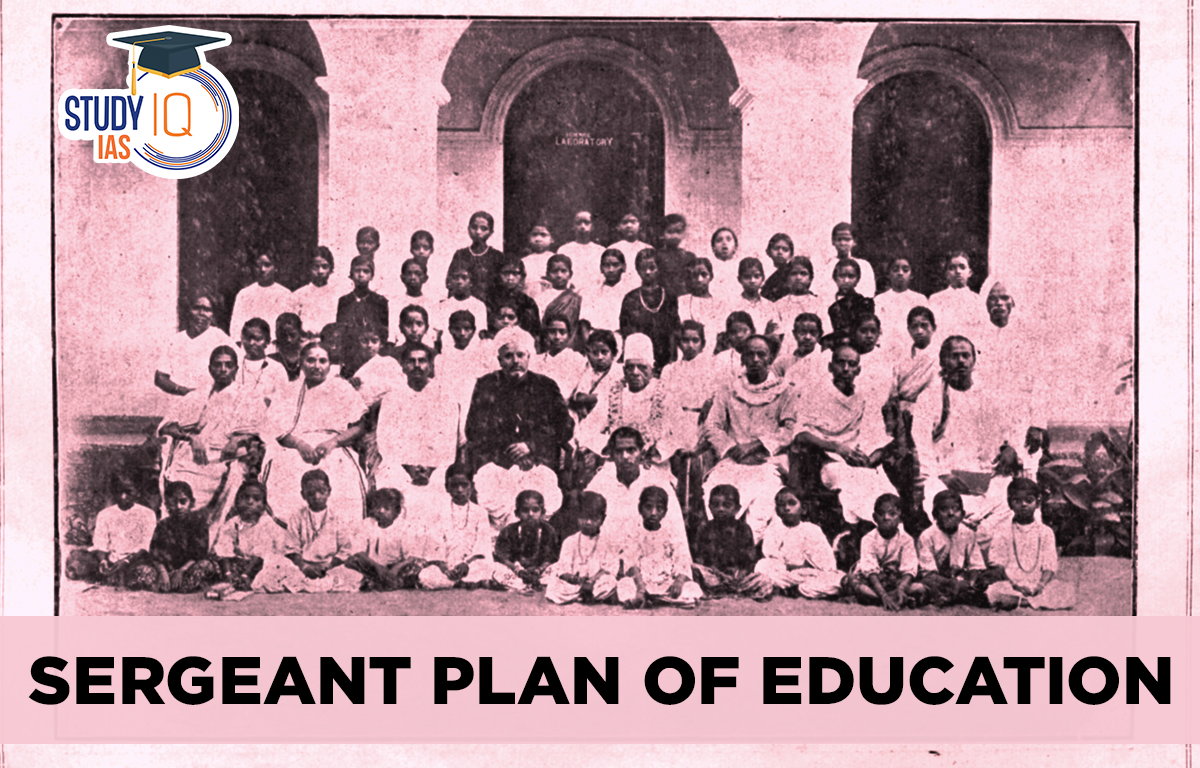Table of Contents
Sergeant Plan of Education 1944
The Sargent Plan of Education 1944 was one of numerous actions the British did to advance education in India. In 1944, John Sargent was charged with coming up with a comprehensive plan for Indian education. 22 people made up the 22-person committee.
In 1944, they presented their report to the Central Advisory Board of Education, which approved it and decided to put it into practice. The establishment of the national education system in India began with the publication of this report. For applicants preparing for the UPSC Exam, this article contains all the information about the Sergeant Plan of Education.
Sergeant Plan of Education History
In 1944, the Central Advisory Board of Education produced the Sargent Analysis, a thorough report on the evolution of education following World War II.
It envisioned an educational system that included universal, free, and mandatory primary basic education for all children between the ages of 6 and 11 (junior basic) and 11 to 14 (senior basic), as suggested by the Wardha Scheme, with senior basic or middle school serving as the final stage in the school careers of the majority of students. The research suggested that middle school students should have access to a choice of courses.
These classes ought to be created to help students get into both colleges and industrial and commercial vocations. It was suggested that the high school curriculum should last six years.
Objectives of Sergeant Plan of Education
Both should aim to give students a solid all-around education while also giving them some late-stage preparation for the vocations they plan to pursue once they graduate from school.
All secondary schools are required to offer instruction in the mother tongue. The Sargent Report also made several other recommendations, including the elimination of adult illiteracy in about 20 years, comprehensive support for teachers’ proper training, support for children with physical and mental disabilities, the organization of mandatory physical education, support for social and recreational activities, and the establishment of departments of education in the federal government and in the states.
The Sargent Report was the first comprehensive plan to address all levels and facets of education, including technical, vocational, and professional education. This included pre-primary, primary, high school, and university education.
It offered all students the same opportunities. The teaching profession was given the respect it deserved. It was also advised to improve the pay scales and working conditions for instructors. The paper highlighted the value of productive education.
Key Recommendations of Sergeant Plan of Education 1944
Below are the key recommendations of the Sergeant Plan:
| Recommendations | Details |
| Universal and Free Education |
|
| Pre-primary Education | Pre-primary education for children between 3 and 6 years to ensure early childhood development. |
| Higher Education |
|
| Vocational and Technical Training |
|
| Teacher Training |
|
| Adult Education and Literacy |
|
| Education for Girls and Women |
|
| Health and Physical Education |
|
| Special Education | Provisions for education of children with disabilities. |
| Administrative Reforms |
|
| Cultural and Moral Education | Inclusion of cultural and moral education to promote national integration and ethical values. |
Sergeant Plan of Education UPSC
The Sargeant Plan of Education was the first plan that considered education at every level. Additionally, emphasis was placed on teacher preparation. The emphasis is on preparing the pupils to become independent in the future. Additionally, emphasis was placed on physical disability education. The education department was formed by the government in 1945. This article provides comprehensive information on the Sargent Report for UPSC Exam Preparation.
| Related Articles | |
| Education System in British India | Wardha Scheme |
| Sadler Commission | Raleigh Commission |
| Hunter Commission |
|


 Nagari Pracharini Sabha Revival: Backgro...
Nagari Pracharini Sabha Revival: Backgro...
 Ryotwari System in India, Features, Impa...
Ryotwari System in India, Features, Impa...
 Battle of Plassey, History, Causes, Impa...
Battle of Plassey, History, Causes, Impa...





















